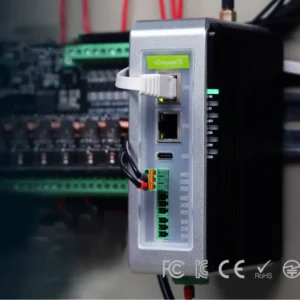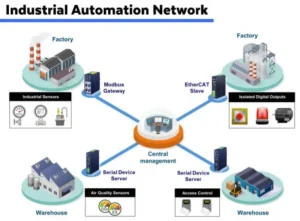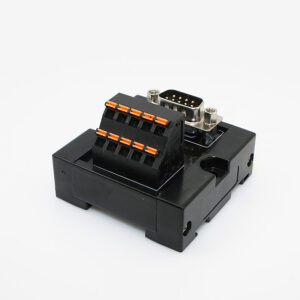With the advancement of Industry 4.0, AI edge boxes have become core equipment for scenarios such as smart manufacturing and smart cities with their real-time data processing and low-latency response capabilities. However, many users overlook a key question: Why do high-performance AI edge boxes require high-reliability terminal blocks?
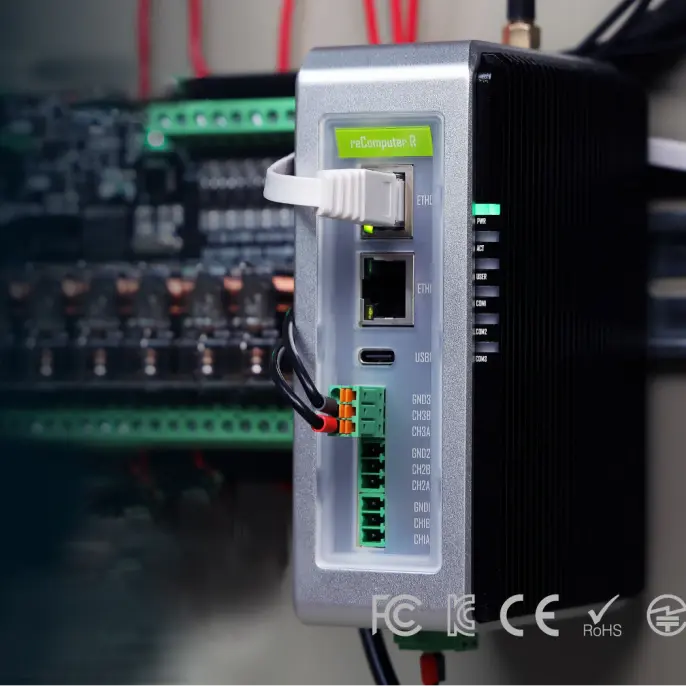
In complex industrial environments, terminal blocks are working as an “invisible bridge” for signal and power transmission, directly determine the stability and safety of equipment operation.
Part1 : Typical application scenarios of AI edge boxes
- Smart manufacturing production line
In the quality inspection of automotive parts, AI edge boxes use high-speed cameras to analyze product defects in real time, while industrial terminals ensure stable signal transmission between sensors and edge boxes to avoid false detection. - Smart city traffic monitoring
Outdoor cameras use AI edge boxes to analyze traffic data, and anti-interference terminals ensure signal integrity in humid and high-temperature environments and reduce data packet loss. - Energy management (photovoltaic power station)
Facing the demand for high-voltage current collection, high-temperature resistant terminals use high-voltage isolation design to prevent circuit short circuits and extend equipment life.
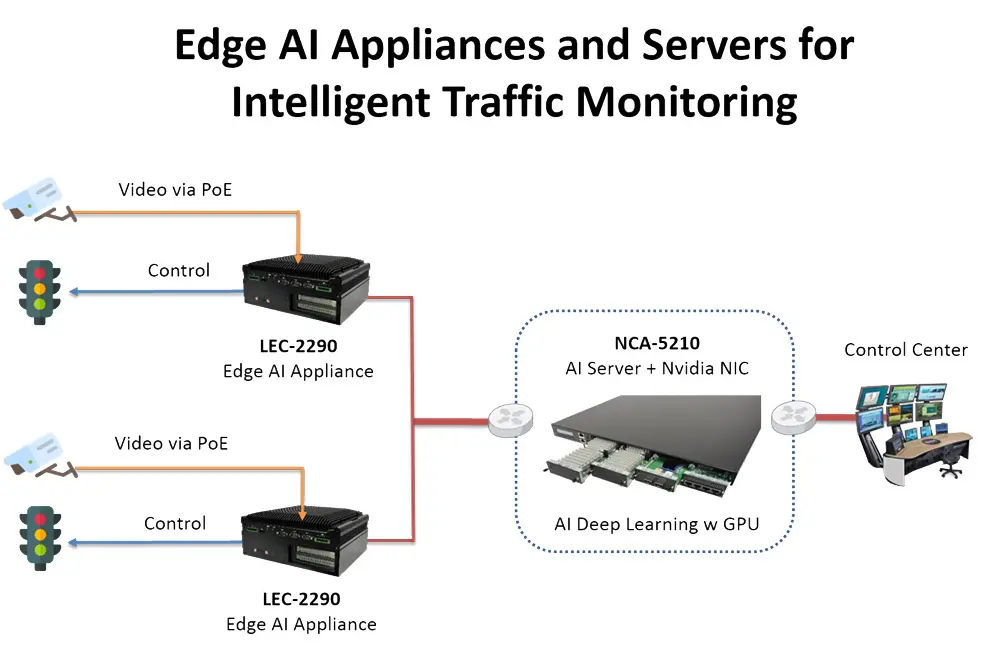
Part2 : What is the core function of the terminal block in the AI edge box?
Function 1: Modular fast maintenance
The plug-in terminal block adopts a guide groove + snap-on locking design, which can quickly separate the terminal block from the female part without tools.
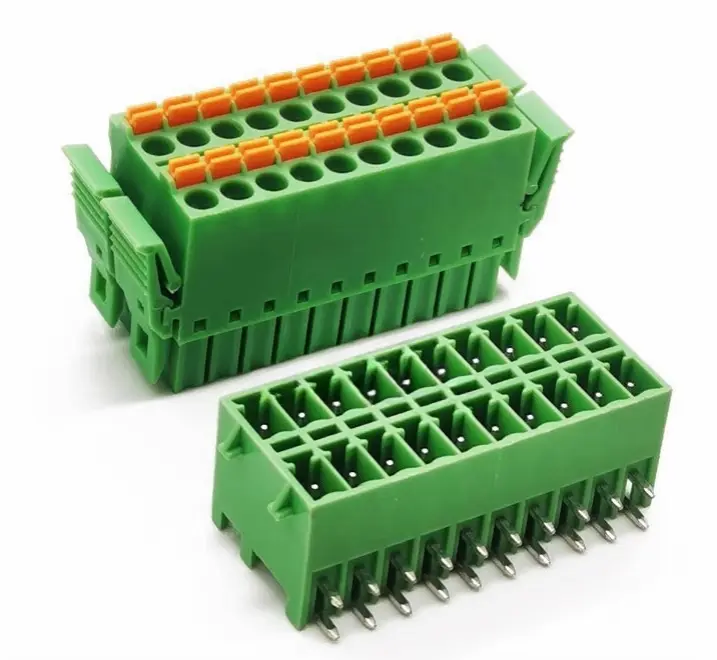
Application scenario:
When the AI edge box needs to be upgraded or replaced (such as factory algorithm iteration), the operator can directly unplug the old terminal module and replace it with a new module, reducing 90% of downtime.
Function 2: High-density space optimization
The plug-in terminal supports a double-layer stacking structure (such as 3.5mm pitch pluggable terminal block), and a single module integrates 24 signal channels to adapt to the miniaturization trend of AI edge boxes.
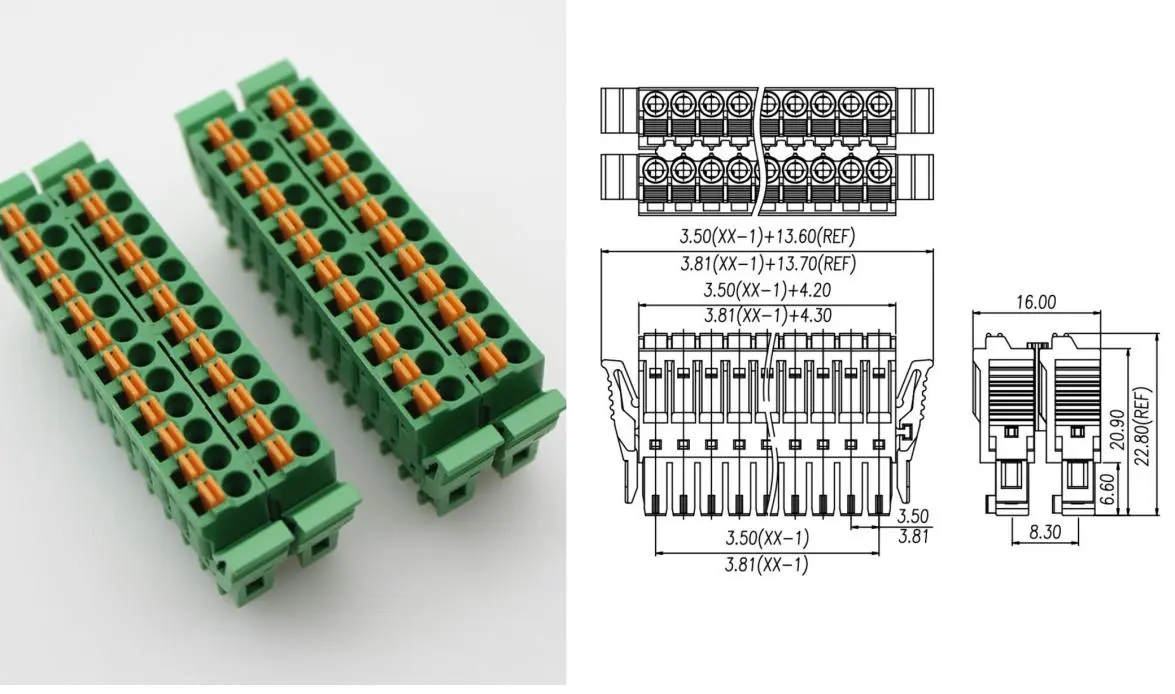
Application scenario:
The AI edge box of the smart street lamp needs to be connected to multiple cameras and temperature and humidity sensors. The plug-in terminal saves 60% of space and avoids signal interference caused by cluttered lines.
Function 3: Anti-vibration and anti-mistake touch protection
Technical description:
The plug-in terminal is equipped with a self-locking spring sheet and an anti-fool mark to ensure that the connector does not loosen in vibration scenarios such as rail transit, while avoiding the risk of reverse plugging.
Application case: After a subway intelligent monitoring system adopted plug-in terminals, the signal interruption failure rate caused by vibration dropped from 3 times per month to 0 times.
Part3 : How to choose the appropriate terminal block for the AI edge box?
Plug-in terminal blocks have become the preferred connection solution for AI edge box deployment due to their modular design and fast maintenance capabilities. The following is a selection guide based on the plug-in characteristics:
1. Electrical Performance Matching
(1) Current and Voltage Levels
Low current signal transmission (such as sensor data): select 0.5~5A micro plug-in terminals (pitch 2.54mm).
Power supply for high-power equipment (such as industrial cameras): 20~32A high current plug-in terminals (pitch 7.62mm) are required.
Typical Case:
The AI edge box of a photovoltaic power station needs to be connected to an inverter (30A output). Silver-plated contact plug-in terminals are used with a withstand voltage of 600V to ensure stable power supply under high-voltage environments.
(2) Contact Material
Gold-plated contacts: Suitable for high-frequency signal transmission (such as Gigabit Ethernet), impedance ≤3mΩ, to avoid data packet loss.
Tin-plated contacts: Lower cost, suitable for low-speed signal scenarios such as temperature sensors.
2. Environmental adaptability
IP67 protection level is selected for outdoor scenes, and vibration-resistant terminals are required for rail transit.
3. Terminal block manufacturers recommend
| Brand/model | Advantages | Price |
|---|---|---|
| Weidmuller B2CF 3.5 | 5000 plug-in life, supports -40°C~105°C | high |
| WAGO 714-103 | P20 protection, tool-free installation | mid |
| Phoenix DFMC 1,5/12-STF-3,5 | 100% humidity resistance, IEC60664 certification | high |
| AOSI-Electronics FPS1.5-350-22 | High cost performance, 5000 plug-in life, CE certification | economical |
Selection recommendations
- Harsh industrial environment: Phoenix DFMC 1,5/12-STF-3,5 metal shielded female connector.
- Cost reduction for small and medium-sized projects: AOSI Electronics FPS1.5-350-22 composite female connector (High cost performance, support bulk bargaining).
Price influencing factors
- Contact plating: Gold plating is 30%~50% more expensive than tin-plated terminals.
- Certification requirements: UL/IEC certified terminals have a 20%~40% premium.
- Procurement scale: For orders of more than 1,000 pieces, AOSI Electronics can provide a 15% discount.
Conclusion
The intelligence of AI edge boxes cannot be separated from the support of underlying components. Choosing high-reliability terminal blocks not only improves equipment stability, but also reduces long-term operation and maintenance costs.
Contact us now to get customized terminal block solutions!

